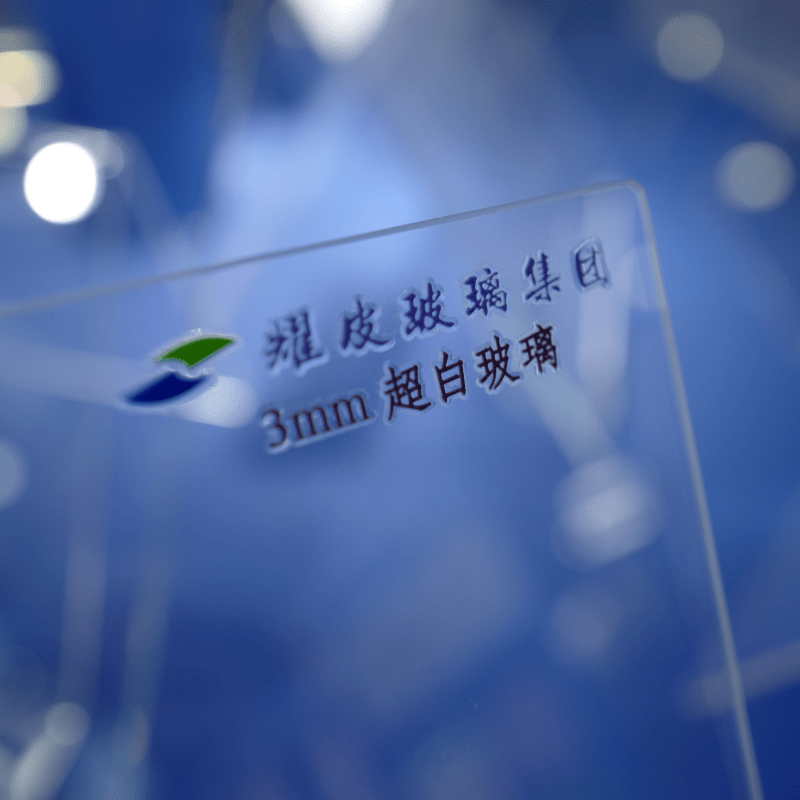Glas na Gréine vs Glas Rialta: Míniú ar na PríomhDhifríochtaí
Tá forbairtí suntasacha tagtha ar shaincheimic na gclúdach, go háirithe i bhforbairt ghloine speisialta na gréine, mar thoradh ar fhorbairt teicneolaíocht fuinnimh athnuála. Baineann ról thábhachtach leis an ábhar chasta seo ag uasmhéadú éifeachtaíochta córas fuinnimh na gréine, agus é a dhéanamh difriúil ó ghloine traidisiúnta ar go leor bealaí. Tá sé riachtanach tuiscint a fháil ar na difríochtaí seo do dhuine ar bith atá páirteach i tionscail fuinnimh na gréine nó in ailtireacht inbhuanaithe.

Airíonna Bhunúsacha Ghloine na Gréine
Cothromuíocht Chimice agus Struchtúr
Ar thaobh eile de ghloine gnáth gloine ghréine baineann le comhdhéanamh ceimiceach speisialta a dhearbh go beacht do thrasduithe solais oiriúnach. Cuireann an t-ábhar ina chuid inneachar iontais íosta, de ghnáth níos lú ná 0.01%, i gcomparáid leis an 0.1% atá i bhfáil i nglass chaighdeánach. Méadaíonn an laghdú san inneachar iarainn trasduitheacht na gréine go mór agus laghdaíonn sé caillteanais d'iomarcas.
Foghlamaíocht Scátháin agus Coibhneis
Cuirtear próisis córaisithe casta ar cheamara ghlass na gréine chun a fheidhmíocht a fheabhsú. Cuirtear compord ar an aer le laghdú a dhéanamh ar athroiscint solais agus ar thrasduitheacht a uasmhéadú. Chomh maith leis sin, bíonn airíonna féin-glanaithe go minic ar na ceamaraí seo trí chúlúcháin hydrophobic nó hydrophilic, agus cuireann siad feidhmíocht oiriúnach ar bun fiú faoi shondasanna comhshaoil dúshlánaí.
Carachtaristici peirfeachta
Airíonna Aistriú Solais
Taispeánann fuinneog ghlas solaraí cumas forbartha ar ascléir a dhéanamh, agus bíonn rátaí os cionn 91% go minic, agus is minic a bhaineann fuinneog chaighdeánach amach le 80-85%. Tá an t-ascléir mhionsaithe seo ríthábhachtach do éifeachtúlacht phainéal solaraí, mar gach pointe céad de fhorbairt san ascléir chruinnithe comharthaíonn tionchar mór ar chumas ghiniúint an éinrgi.
Inseachas agus Tréithneacht
Bíonn faoi láthair neart solaraí níos mó ná fuinneog thraidisiúnta. Cuireann sé tríd phróisis speisialta teirmithe chun seasamh le coinníollacha aimsire eitseanacha, lena n-áirítear builleanna reo agus lucht tinnim ard. Léiríonn an tsolúbthacht chruinnithe seo saol inmhéadach 25-30 bliain, atá i bhfad níos faide ná feidhmneachtaí fuinneoga coitianta.
Feidhmeanna Teicniúla agus Buntáistí
Forbairt Ghiniúint Éinrgi
Is féidir le suiteálacha glassa na gréine nua-aimseartha éifeachtúlacht ghiniúint an éinrgí a fheabhsú go dtí 15% i gcomparáid le córais a úsáideann glassa caighdeánach. Tagann an feabhas seo ó na héifeachtaí comhthreomhnaithe ar thrasdhlúchadh solais, laghdú ar athrocht agus forbhraitheanna níos fearr ar umhaithe teasa atá inhereanta do chomhdhéimeanna speisialta glassa na gréine.
Bainistiú Teocht
Cuireann an glassa gréine gnéithe forbartha bainistíochta teasa san áireamh nach bhfuil ann i nglassa ragra. Is féidir leis teocht oibre oiriúnach a choimeád do chealla fhótachuisléite, ag cosc ar imní ar éifeachtúlacht a tharlaíonn nuair a théann painéalacha ró-theo. Tá an cumas rialaithe teochta seo go háirithe tábhachtach i gcomhshuíomhanna ard-teochta.
Gnéithe Airgeadais
Costais suiteála agus cothabhála
Cénár bpríos tosaigh ar an nglassa gréine níos airde ná sin ar ghlassa ragra, de ghnáth is í an réidhmhaise agus na gnéithe feidhmíochta níos fearr a fhágann costais fhadtéarmacha cothabhála níos ísle. Laghdaíonn na hairgí féinghlanaithe agus an t-ualacht don dhoiminictheacht timpeallach freastal agus costas na hoibríochtaí cothabhála.
Tuairisceadh ar Infheistíocht
Cinntíonn na cumais feabhsaithe i gcomhthéacs ghiniúint an éinrgí a bhaineann le gloine ghrianáin go dtugann sé airgead ar ais ar a shrocostas tosaigh trí fheidhmíocht na córaime a fheabhsú. Léiríonn staidéir go n-oscailtear an t-inbheistíocht breise i ngloine ardchaighdeáin ghrianáin laistigh de 3-5 bliain trí tháirgeadh éinrgí a mhéadú agus tréithiúchán a laghdú.
FAQ
Fad saoil Gloine Ghrianáin
De ghnáth, coimeádann gloine ghrianáin a gairmíníochtaí feidhmíochta do 25-30 bliain, agus mar sin tá sé i bhfad níos faide beo ná gloine rialta i ngníomhaíochtaí amuigh. Bainneamar an fhás seo amach tríd phróisis déanta go hiomlán agus comhdhéanamh ábhair faoi uachtar.
Ceanglais um Chothabháil
Teastaíonn tréithiúchán íseal ó ghloine ghrianáin mar gheall ar a hábhair glan-fhéin agus a chumas feidhmiú. Is minic a bhrathann iniúchadh rialta agus glanadh tréimhseach le huisce chun feidhmíocht ar a bhfuil is fearr a choinneáil.
Éifeacht Timpeallach
Teastaíonn níos mó fuinnimh le díolúint ghlassa na gréine ná do tháirgeadh ghlassa rialta, ach compensatedar an chostas timpeallach tosaigh seo ag glaoch ar gheneráil chomh maith le fuinneamh athnuálaite le linn a saoil. Is féidir an ábhar a athróiníocht go hiomlán, agus cuireann sé sin le cleachtais táirgeála comhdhaingneacha.
